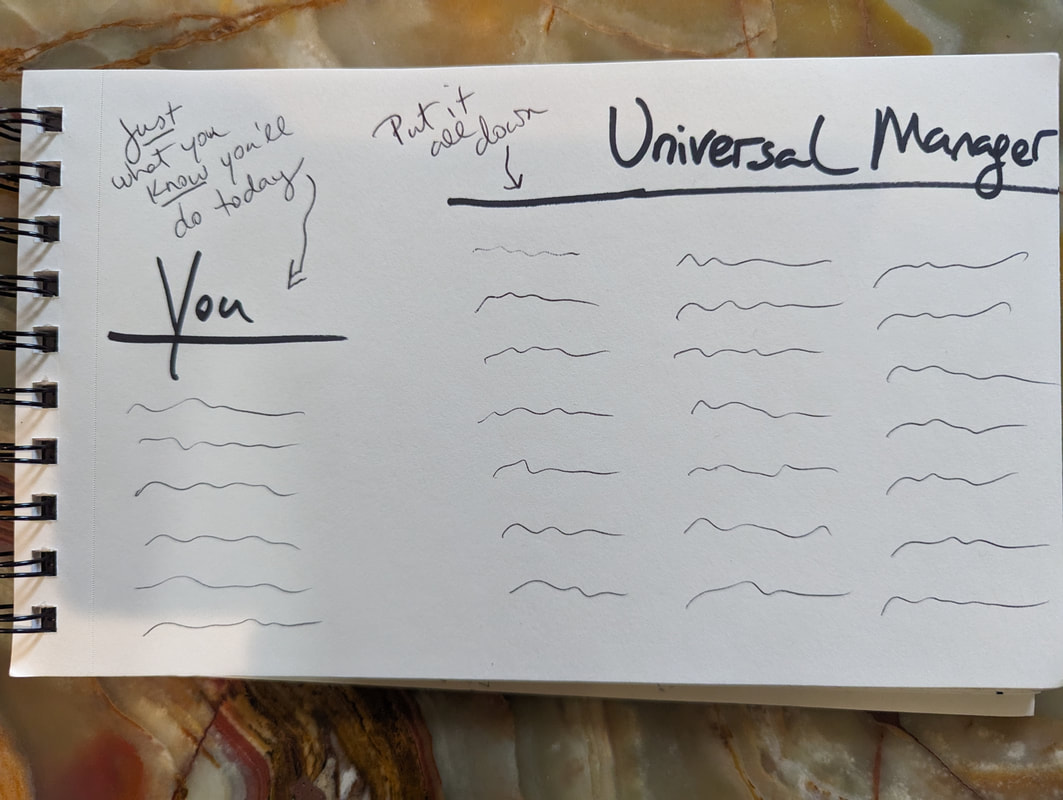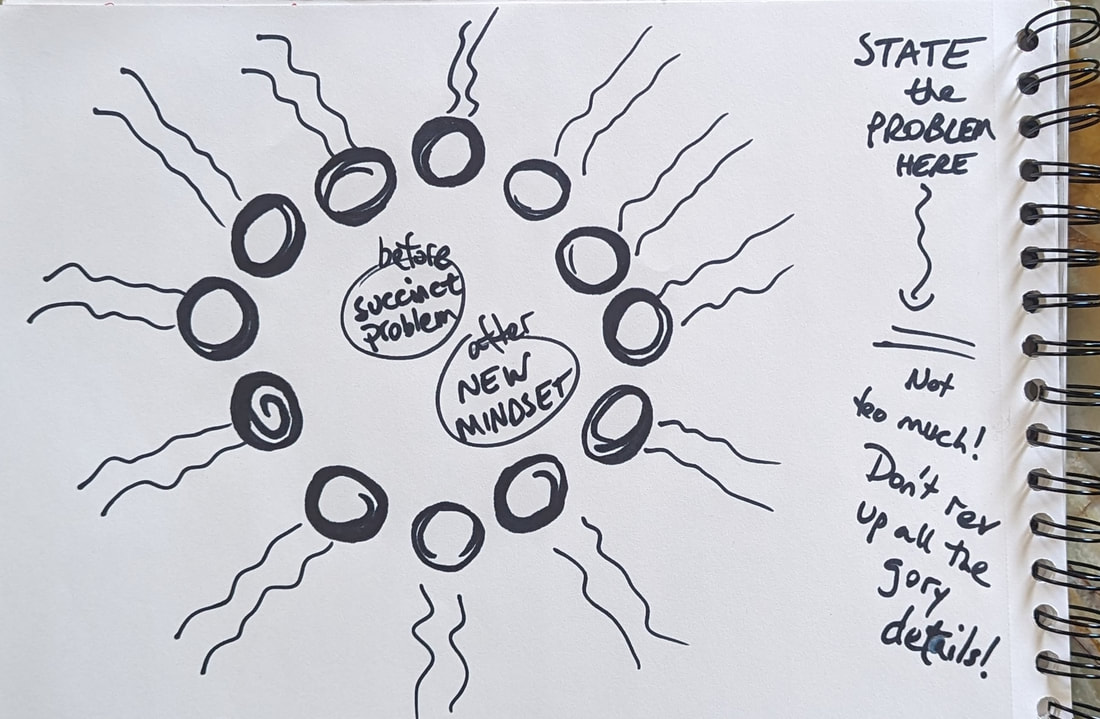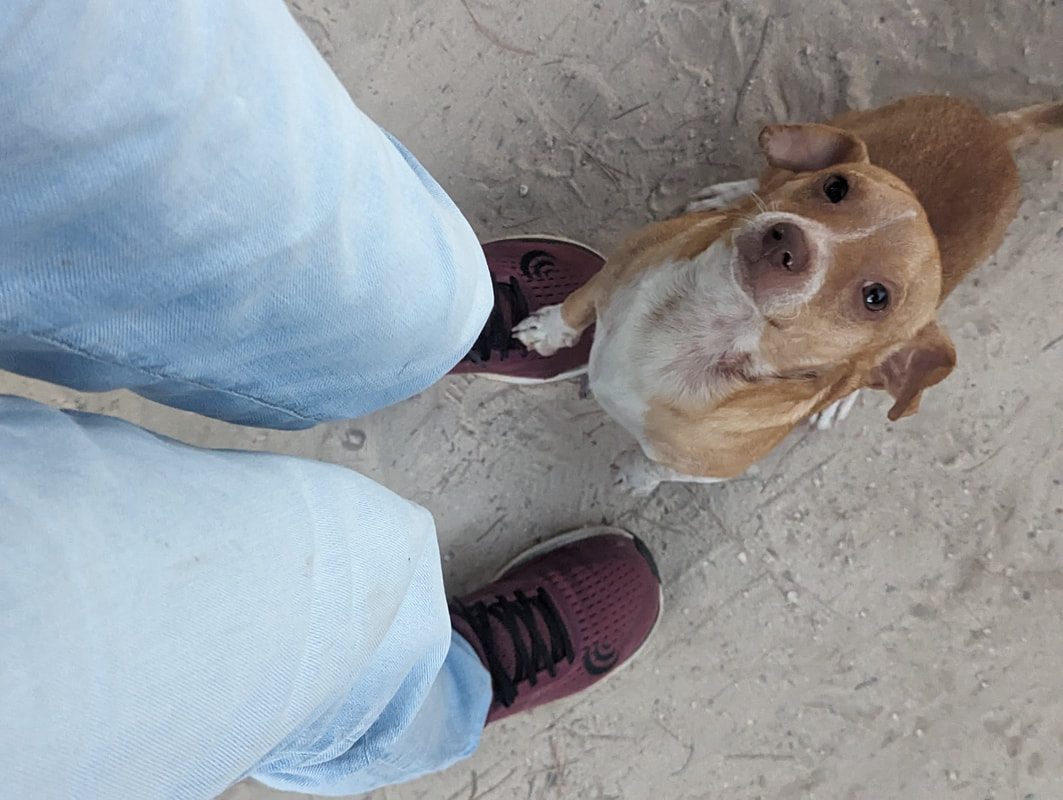|
... and let go of the hard & pointless work of being the doer Want a quicker read? You can simply learn or review the placemat process by starting below the first pic. Scroll down, baby … I was thinking about how hard it is for people to LET GO of trying to control all the parts and believing I’M THE ONE who makes it happen. Doership! We even stir up more confusion by accusing ourselves of being irresponsible or not properly showing up when we’re not doing our utmost (as we tense up & exhaust ourselves) to think of everything and manage all the parts. That’s a problem because
Those who use the G-word sometimes say, Let go and let God. Um, sure, that can be used to go complacent or excuse not stepping up. It can also be used to let go of what you can’t control, and let the greater intelligence do its thing. It will always include you in the doing (some of us think you are God and God is you), but won’t put you in charge of what you just don’t have the capacity to do, manage, or control (since you’re also in this limited ego-reality as an individual human being). When I first heard the term the organizing intelligence of the Universe, it just sang to me. I was already aware of the love force and fully down for that. I hadn’t thought about or even begun to take in (and that will be an ongoing process till I die) the unfathomable intricacies & crazy brilliance of what I now call the orchestration. So how do you come to know that, work with it better, FLOW with it, give yourself to that current? Play your part and put down what’s not yours? The PLACEMAT PROCESS from Abraham-Hicks is my favorite way to put stuff down and get crystal clear about what I’m doing and what I’m not doing. And bee-tee-dubs, it’s called that because Esther (yeah, the nice white lady from Texas who channels Abraham, which or who is actually a group of entities, I know, I know, but stay with me, please, because it’s brilliant)—Esther got this process while she was at a restaurant and used a paper placemat to try it out. For those who like Byron Katie’s 3 kinds of business, note that this allow you to clearly and on paper (where you won’t get sidetracked by all the slippery seaweed in the mind) write down in one area what belongs to the Universe and even to other people, and separately note what’s yours.
The act of writing it down is also a literal and symbolic putting it down. Placing it in those larger hands, or into that great holding net where everything’s being gorgeously woven together in a way that works for the good of all concerned. So in your area on the paper, you write down only what you’ll do today. Abraham says, Mean it. Whatever you put there, you know for sure you’ll get to it. Cool if you get this wrong, folks. Use it to take in how confused you still are about how much you’re supposed to and can get into a day. We’re actually not meant to CRAM OUR DAYS full with productive activity. Ay, that’s the great cultural lie of doership and what it means to be good little worker bees. (I imagine real bees are relaxed & having a good time as they bop around collecting pretty powdered nectar & turning it into exquisite golden honey.) But it’s not just that I’m NOT DOING the things I put down in the Universal Manager area. The organizing intelligence, or what A-H calls the Universal Manager, is all over it. Bringing things together with that uncanny right-place right-time precision, flowing things your way, getting people queued up to enter stage left or bump into you as you round the corner, in short—orchestrating. Or … lining up cooperative components that will support you to get to where you’re going. Do watch if you choose to experiment with this. Notice how things moved forward that you didn’t touch because you gave them, for real, to the UM who knows how to effortlessly make it all happen & come together gorgeously. So ANYTHING you’re thinking about, worried about, wishing you could get to, thinking you should already have gotten to (but truth is, you won’t get to it or can’t do anything about it today), PUT IT DOWN. You’ll know as you write (and after) you really are putting it and did put it down when you feel some RELIEF. When you relax. When you feel light instead of heavy. When you feel you’re doing enough, it’s good enough, all is well. (Notice the trust in this?) Put down all that you don’t need to carry today because it’s really not what’s up for YOU to manage, hold, do, or orchestrate. Examples:
When you can look at your little (way littler) list and feel good about THAT being the stuff of your activity today, you’re on the right track. Maybe you’ll even remember that the ACTUAL stuff of your day is not just what you check off the to-do list but …
Hey, I’ve heard Abraham gently & playfully scold people for acting like they’re delegating things to the Universal Manager, and then they have the right to be upset if something didn’t move something forward the way they’d hoped. You’re getting the benefits of the process when you feel RELIEF. Intend relief. Note relief means less resistance. It means you’re entering or you’re in the flow. It means you’ll give yourself a much easier time of it. There’s more going on too but … that’s enough, isn’t it? Love & blessings, Jaya
0 Comments
... and the amazing MARBLE GAME to use on this topic or any other Want a quicker read? Scroll down for a numbered list of 12 ways to think about time that feel better. If there’s any detrimental belief that A LOT of people from all walks of life share, at least in American culture and I daresay in most places around the globe, it’s that there’s not enough time. We have more to do that we have time to do it in. Does that even sound right? Is that even possible? And yet people walk around believing it. Please take a moment to notice the toll this takes on you. It’s going to do something that’s counter to total well-being. Any of this sound familiar?
And more. Any awareness hitting right about now about how absurd it is to give yourself this ongoing experience that’s based on an illusion? IT’S NOT REAL. But the effects of believing it are very real, and they impede so much:
And more. Abraham-Hicks has a clarifying and focusing process they call the marble game. It’s really simple and it’s really worth trying. Marbles are your thoughts and beliefs. All the thoughts and beliefs you’ve ever had. We have a lot of those, so in the marble game, you determine which ones you want ACTIVE in this situation. Which beliefs do you want to run the show? For example, you may have three marbles that say
You may have three other marbles that say
Which marbles would you like to have active as you look for a job or start the process of buying a house? Notice you’re likely to feel bad about yourself and ill-equipped for what’s next if you have the first three active; you’ll feel torn and vacillate between mindsets and the matching emotional states if you have all six active; you’ll feel empowered and curious about what’s possible with the last three active. So anytime in life that you notice you’re leading with a bad marble or you have a seriously active marble that’s not where you want to stand—like, There’s not enough time for all I need to get done—then play the marble game to consciously choose 12 marbles you want active. I did that on that very topic one morning recently. (See my activated, chosen marbles #1-12 below the illustration.) Use the right margin to lay out the problem. Draw a circle of 12 marbles (same positions as for numbers on the clock). In the middle of those, draw 2 circles. The first inner circle will contain the succinct version of the problem already written out in the margin: Not enough time for all tasks. Go ahead and put that in before you fill in beliefs next to each marble. Here, you could also just write a one-word statement of how you’re feeling about that margin problem (discouraged, depleted, angry). Write your 12 statements of more positive, empowering, helpful beliefs you already have (or ones you don’t have to reach too far to get to), the ones you do want to stand in and create from. These go next to the marbles where my squiggly lines are in the illustration. The second inner circle, you’ll fill in at the very end, when the writing out of 12 marbles you want activated brings you to a new mindset: Tasks & time coexist perfectly. (If you chose to write a single feeling word here as described above, then your new words might be brave, energized, accepting.) Here are the 12 marbles (things I actually believe, or that aren’t too far out of reach, and that I want to have as my ACTIVE beliefs) that got me from "Not enough time for all tasks" to "Tasks & time coexist perfectly."
I invite you to play with Abraham’s marble game to consciously activate the beliefs you want to live out of—or carry into just one situation that’s coming up. Love & blessings, Jaya AND IN ALL OF LIFE AND WHY ALL YOU NEED TO MIND IS HOW YOU FEEL In the sky & sea pics that follow, check out the variety of colors. So many. Fewer than in real life (!), but still plenty captured by my phone camera. It started with noticing one rainbow. We were walking along the shoreline, my long-haired son & I, in that marvelous pre-sunset hour. The winds were whipping up waves and hair, the usual dogs recognized us and bounded over for cuddles & scratches, and LOOK (he said)—a rainbow! In the weirdly busy hour that followed, we saw more rainbows and bits of rainbows in clouds and sky. We actually weren’t doing much. We just walked the strip of sand that got us to the lounge chairs we could rent for the price of one fizzy drink full of lime wedges, floaty mint leaves, and small ice cubes. Then everything got still for the next 40 minutes. Except nothing was still. The winds kept whipping, the rainbows & dogs came and went, and the colors in the sky never quit changing. We got up once to take a picture when the array of colors was beyond insane, and by the time we found our desired places and the camera was ready (not even a full minute), our background wasn’t the same. Everything changes. Always. Constantly. Always. Constantly. That’s why it’s a waste of precious time to fixate on what’s not to your liking in the present moment. That’s why it serves nothing to say you’re stuck. You really can’t be. (It’s okay if you feel stuck and notice you feel stuck. It’s great if you hear yourself think or say that you’re stuck. Just use that to come to and remember again--no wait! I really can’t be.) Abraham-Hicks tells us again and again, Don’t fixate on current conditions. They’re not reality. (Not a fixed reality. Not the whole reality.) They’re not going to be here in one more moment. Fixate on how you want to feel, and you’re good. Then you’re completely in charge (AGENCY!) and at nothing and no one’s mercy. Let conditions come & go. Some will be to your liking, some not. Some you will think are really wrong. Some will be fucking amazing. Keep the focus on how you feel. Check in with it. Notice it. And reach for what feels better if anything doesn’t feel good at all (subtly or hugely or in any way). What thought would feel better right now? What connection to body & breath would feel better right now? What can you do to soothe your feeling state right now and simply make yourself feel better? Are you fixating on what feels bad? Sinking into it? Dissecting it? Discussing it? Revving it up? That’s an option. (And you’re not a bad person if you’re there! Just a person.) What else is possible, though? You could take charge of the one thing you can control as conditions keep changing. Mind how you feel. Reach for what feels better right now. Love & blessings, Jaya P.S. Monday-night group-coaching drop-in sessions are on a different schedule in December. We did not meet last week, but we’ll meet this week and next (Dec 11 & 18). I’m also doing a special Dec 27 Wednesday-night group (still 7:30-8:30 ET). New and repeat people come to these Monday events all the time, so it could be you! You too are so welcome to join us on- or off-camera. that call you to feel ALIVE I was doing a focus wheel early one morning to get my head space right where I wanted it. (Focus wheels are FUN and you can add color or use different colored pens. TRY IT. No tool is better for pointing yourself properly toward the day or some specific task or event that you notice has anything sticky or heavy in it for you.) Somehow the lightening sky caught my attention through a window and I had the impulse to jump up, step outside, and look up. And then I didn’t want to. It’s getting cold, and I’m not acclimated yet, and I tend to resist cold. And I accused myself of not focusing if I got up. (It’s a weird way we talk ourselves out of following guidance—with some righteous-sounding accusation.) But that place in my side where I got the tug was still doing something, and I’m pretty committed to following those nudges & impulses when I get them. So I got up and went outside. Wow. The air was amazing, if a little cold—then the longer I stayed the more I felt into how fine it was to feel cold. The clouds were kind of blushing just a little bit with the edge of the sunrise (which is mostly blocked where I am, so I LOVE when I step out while the clouds are still reflecting some color). The moon was a skinny sliver, which may be my favorite phase in its cycles—and most certainly is my favorite in the now-moment when I catch it in that phase. And then as I stood there, I happened to look down and over as a rabbit popped out of a hiding place and hop-ran away from my human presence. They may not have been happy to see me, but I was oh so happy to see them. I love a rabbit sighting, and I’d been thinking I hadn’t seen one in a while. And then I looked up at the moon and clouds and sky again and remembered something I love to say to myself: let the morning make its impressions on you. I did that. I loved it. And I felt so alive. Let the morning make its impressions on you. You can place any word you like in the slot morning is taking up in that sentence. However you fill in the blank, the idea here is a call to PRESENCE. Fully take in the thing you’re bringing awareness to. Let it make its impressions on you. Feel it in body and heart. There’s head-center stuff to notice too—like associations, symbology, or even just using what you perceive to consciously tell yourself things: This is a lovely morning. What an amazing way to start the day. This is going to be a great day. This is not a wow or intense story. There’s no car chase. No falling in love, except with the moon, all over again. Nothing extraordinary or even worth writing about. Except I really wanted to write about it because it has huge implications for your connection to your guidance system, and for living the life you want. I want to invite you to follow those impulses that make you feel alive. That’s one way you know it’s a good impulse. (Okay, sure, if you’re an adrenaline addict or if anything that’s really self-harming makes you feel alive while you’re healing something, this does not apply.) For the impulses to do what nourishes your soul and thus your entire being, go. Jump up. Step out. Let some small thing be worth a moment of disturbance, like it’s worth it to drink water, to do a stretch, to gaze at a face you love in the middle of your work day or any activity. Notice your resistance to following those impulses. Don’t worry about it or judge it. Don’t even sit around asking, Why do I resist these things? Do notice. Notice that you’re calibrated to talking yourself out of things that actually align with what you say you want or value or who you want to be or how you want to live. That’s no problem, because we all do this. And we all have a guidance system that’s equipped to move us through and around resistance. We all have resistance. It’s a wacky human thing. Do be aware of it and notice it, and just take a moment to call it what it is: it actually helps to name your resistance. We sometimes especially resist little things. You won’t make or break anyone’s day or ruin their life if you push against an impulse to go look at the moon. But actually, you could change your day more than you suspect in the moment. You will certainly rob yourself of that dance with consciousness in which you’re constantly whisper-called and gently nudged, again and again, so kindly, so gently, to all that you want. And when you practice following those tiny impulses with the little things, you get really good at doing the dance (YOUR DANCE WITH CONSCIOUSNESS) and you can apply it in all things large or small. Most of us talk back to some absurd percentage of the guidance-system impulses that come our way. What if you didn’t? What could your life become if you made it a practice to just respond, now, to all the nudges toward LIFE and feeling alive and taking care of yourself and reaching out to someone and and and … Find easy, tiny ways to just respond to the guidance. It’s actually not inconsequential to let the dawn make its impressions on you. Or to throw into the pot the random spice you just thought of or the vegetable that caught your eye. It does something to get up and brush your teeth when you feel the tug to go do that next. Follow your guidance system. One tiny impulse at a time, it will get your right where you want to be. And one noticing and countering of resistance at a time, you’ll become a well-tuned dance partner to this custom-made guidance system that kind of only has eyes for you—and actually has the good of all concerned forever simultaneously in view. You really can’t go wrong. Wanna make it a practice? Love & blessings, Jaya Easiest way to sift through thoughts that work for or against you I love super-simple ways to bring in greater ease, clarity, and joy. Since our thoughts shape our reality—and also show us how we’re viewing, holding, and moving through our reality—I love looking at thoughts to notice, very simply … Is this an upstream thought or a downstream thought? I got this from Abraham-Hicks. Is this thought taking me toward stress, fear, disempowerment, a sense of doing it wrong [or not doing enough, or working with the cards stacked against me, or keep filling in the blank to match what you steer yourself into]? Or is it taking me toward greater ease, trust, joy [or empowerment, or a sense of potential & possibility, or keep filling in the blank to match what you prefer]? Upstream or downstream? Am I riding the current to get to where I want to go with ease and efficiency? Or am I pushing against the current and costing myself a whole lot of wasted energy as I feel increasingly exhausted and lose any sense of well-being? And note that thoughts, much like potato chips, aren’t really interacted with one at a time. So in a series or sequence of thoughts, you might notice what’s upstream and what’s downstream. I can’t seem to get ahead. Upstream thought. I work so hard but it’s not really getting me anywhere. Upstream. I’m really just bad at the whole money thing. Upstream. Things really aren’t great in my field for anyone right now. Upstream—maybe thinking about pointing downstream, because now it’s less personal and contains less self-blame, but it has a victim component and isn’t exactly hopeful or empowering. Still, maybe you’re trying to tilt the paddle the way the instructor showed you works better. … I’m really trying. Upstream (maybe masquerading as downstream, but nope, still no). I just can’t seem to get ahead. Squarely back upstream. Um, so how do you get downstream from there? The problem with those potato-chip thoughts is, you keep grabbing the next one, the next one, the next one, and there’s a momentum that revs up. It gets harder and harder to go in the other direction.
So just reach. One thought at a time. Reach for the easiest downstream or canoe-shifting or oar-reposition thought you can see to reach for. I’m actually okay right now. Definitely heading the right direction. My basic needs are met. Downstream. I’m actually well. Downstream. I usually like my life. Angling a bit upstream, especially if the focus is on usually, but not bad, not bad. I’ve really come a long way with money stuff. Downstream. I’m doing better than ever. Downstream. I wasn’t sure I could pay off that credit card debt, but I totally did. Downstream. Of course, I still have no savings. Upstream! I’m fortunate to have a job that many would be happy to have. Okay, heading roughly in the right direction. Especially if you’re not feeling that in any way that resembles, I really should be grateful or this job, too, will be snatched away. (Ay, the gratitude thing can be slippery.) I actually like my job. Downstream. They’re not paying me what I’m worth, though. Upstream. I mean, I often love my job. Downstream. And I’m getting better and better at what I do. Downstream. That could actually mean more money. Downstream. Someday. Um … But with my luck-- Upstream! I did get a raise last year. Downstream. From there, you could go upstream (So Goddess knows how many years till the next one) or downstream. You can always next go upstream or down with your next thought. Let’s string together a bunch of downstream thoughts, because that’s where I want to invite you to take yourself when you do this at home. (Go ahead! Boldly try this on your own at home!) So between that and the debt I paid off, it really is better. And there are more ways to make money besides raises. And in the meantime, I love my life. I don’t need to figure this money thing out right now. I don’t even need to give it my focus. I’m open to inspired ways to bring money in and feel good about what goes out. I’ve gotten so much better at things I used to think I’d never do better with [even better, name one or more specific things], so I can get better at money too. Money, to the Universe, is no thornier or trickier than any other topic, and I’m willing to keep shedding old ideas about my identity as hopelessly money-challenged. Nothing is hopeless. Everything is hopeful. In fact, things work out for me. Things are always working out for me. It really helps to do this out loud or on paper, not in that morass of the mind. Write down your thoughts about money (or whatever) so you can see a sequence in black and white. Do that, then go back and ask about each one, Upstream or downstream? Or ask someone you love to hear you speak your thoughts out loud, and do that one sentence at a time. Have them simply ask after each sentence: Upstream or downstream? And you answer. Say a few typical thoughts, and once you get the feel of what you’re doing to yourself with your upstream line of thinking, consciously head downstream! With a little practice, you could get really good at cultivating downstream thoughts, and living the downstream life! Love & blessings, Jaya |
Categories
All
|










 RSS Feed
RSS Feed